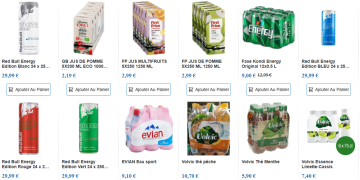
In today’s fast-paced world, maintaining a healthy diet amidst a demanding lifestyle is a challenge many people face. Balancing nutritious eating habits with a busy schedule requires strategic planning, smart choices, and a commitment to self-care. This comprehensive guide explores practical strategies for integrating a healthy diet into a hectic lifestyle, providing actionable advice to help you achieve optimal health without sacrificing your productivity or well-being.
Understanding the Importance of a Healthy Diet
Defining a Healthy Diet
Core Components
- Balanced Nutrition: A healthy diet comprises a balance of macronutrients (carbohydrates, proteins, and fats) and micronutrients (vitamins and minerals). It emphasizes whole foods such as fruits, vegetables, lean proteins, and whole grains while minimizing processed foods and added sugars.
- Hydration: Proper hydration is essential for overall health. Water supports various bodily functions, including digestion, metabolism, and temperature regulation.
Benefits of a Healthy Diet
Physical and Mental Health
- Physical Health: A nutritious diet supports weight management, cardiovascular health, and a strong immune system. It reduces the risk of chronic diseases such as diabetes, hypertension, and heart disease.
- Mental Well-being: Proper nutrition impacts cognitive function, mood, and energy levels. Consuming a diet rich in essential nutrients can enhance concentration, reduce stress, and improve overall mental well-being.
Challenges of Maintaining a Healthy Diet with a Busy Lifestyle
Time Constraints
Managing Busy Schedules
- Meal Prep and Planning: Time constraints often lead to skipped meals or reliance on unhealthy convenience foods. Effective meal planning and preparation can alleviate these issues by ensuring that healthy meals are readily available.
- Quick and Nutritious Choices: Busy schedules necessitate quick and nutritious meal options. Learning to prepare simple, healthful dishes can help maintain a balanced diet without requiring extensive time or effort.
Access to Healthy Foods
Navigating Food Environments
- Limited Options: Busy individuals may encounter limited access to healthy food options, especially in workplaces or travel situations. Identifying and utilizing available resources can help overcome these barriers.
- Healthy Alternatives: Understanding and choosing healthier alternatives in various food environments, such as restaurants or convenience stores, can support dietary goals.
Maintaining Motivation
Overcoming Obstacles
- Consistency and Routine: Staying motivated to maintain a healthy diet can be challenging amidst a busy lifestyle. Establishing routines and setting realistic goals can help sustain motivation and adherence to dietary plans.
- Support Systems: Building a support system, including friends, family, or nutrition professionals, can provide encouragement and accountability, making it easier to stick to healthy eating habits.
Practical Strategies for Balancing a Healthy Diet with a Busy Lifestyle
Meal Planning and Preparation
Effective Meal Planning
- Weekly Planning: Set aside time each week to plan meals and snacks. Create a menu that includes a variety of nutrient-dense foods and accommodates your schedule.
- Grocery Shopping: Prepare a shopping list based on your meal plan to ensure you have all necessary ingredients. Focus on purchasing whole foods and avoiding impulse buys of processed items.
Batch Cooking and Meal Prep
Preparing in Advance
- Batch Cooking: Cook large quantities of meals in advance and portion them into individual servings. Store these meals in the refrigerator or freezer for easy access throughout the week.
- Prepping Ingredients: Prepare ingredients such as chopped vegetables, cooked grains, or marinated proteins ahead of time. This makes it easier to assemble quick and healthy meals.
Healthy Snack Options
Choosing Nutritious Snacks
- Portable Snacks: Keep healthy snacks on hand for busy moments. Options such as fresh fruit, nuts, yogurt, and whole-grain crackers provide convenient, nutritious choices.
- Snack Packs: Create snack packs with a mix of protein, fiber, and healthy fats to keep you satisfied and energized. Examples include trail mix, hummus with vegetables, or apple slices with nut butter.
Smart Eating Out
Navigating Restaurant Menus
- Healthier Choices: When dining out, opt for healthier menu choices such as salads, grilled proteins, and vegetable-based dishes. Avoid fried foods, sugary beverages, and excessive portions.
- Customizing Orders: Don’t hesitate to customize your order to align with your dietary goals. Request dressings or sauces on the side, choose whole-grain options, and ask for additional vegetables.
Incorporating Physical Activity
Exercise and Nutrition Synergy
- Short Workouts: Incorporate short, efficient workouts into your daily routine. Activities such as brisk walking, bodyweight exercises, or high-intensity interval training (HIIT) can be effective and time-efficient.
- Active Breaks: Use breaks throughout the day for physical activity, such as stretching, walking, or quick exercise routines. Integrating movement into your daily schedule supports overall health and complements a balanced diet.
Tools and Resources for a Healthy Diet
Technology and Apps
Nutrition Tracking
- Food Diaries: Use nutrition tracking apps to log your meals and monitor nutrient intake. Apps can help you stay aware of your dietary choices and make adjustments as needed.
- Meal Planning Tools: Explore meal planning apps that offer recipe suggestions, grocery lists, and nutritional information. These tools can simplify the meal planning process and save time.
Educational Resources
Learning and Support
- Nutrition Education: Seek out credible sources of nutrition information, such as books, websites, or online courses. Educating yourself about healthy eating principles can empower you to make informed dietary choices.
- Professional Guidance: Consider consulting with a registered dietitian or nutritionist for personalized advice and support. Professionals can provide tailored recommendations and help you address specific dietary concerns.
Success Stories and Examples
Case Study 1: Balancing Work and Health
An executive successfully balanced a demanding work schedule with a healthy diet by:
- Implementing Meal Prep: Preparing meals in advance and using a meal delivery service for nutritious options allowed for consistent healthy eating despite a busy calendar.
- Using Technology: Leveraging nutrition tracking apps to monitor dietary intake and make adjustments ensured adherence to health goals.
Case Study 2: Managing a Busy Family Life
A busy parent maintained a healthy diet for their family by:
- Involving Family Members: Involving family members in meal planning and preparation encouraged healthier eating habits and reduced the burden of cooking.
- Adopting Efficient Strategies: Utilizing time-saving strategies such as batch cooking and preparing make-ahead meals contributed to a balanced diet amidst a hectic family schedule.
The Future of Healthy Eating in a Busy World
Emerging Trends
Convenient Healthy Foods
- Innovative Products: The market for convenient, healthy foods is expanding, with options such as meal kits, ready-to-eat salads, and healthy snacks becoming more accessible.
- Sustainable Choices: Emphasis on sustainable and eco-friendly food choices is growing. Incorporating plant-based foods and reducing food waste align with both health and environmental goals.
Personalized Nutrition
Tailored Approaches
- Customized Plans: Advances in personalized nutrition, including genetic and metabolic testing, offer tailored dietary recommendations based on individual needs and preferences.
- Adaptive Solutions: Embracing adaptive solutions, such as flexible meal plans and personalized nutrition apps, can enhance the ability to maintain a healthy diet in a busy lifestyle.

Balancing a healthy diet with a busy lifestyle is achievable with thoughtful planning, strategic choices, and a commitment to self-care. By implementing practical strategies such as meal planning, batch cooking, and choosing nutritious snacks, you can maintain a balanced diet despite a hectic schedule. Utilizing technology, seeking professional guidance, and staying informed about emerging trends further supports your dietary goals. Remember, achieving a healthy diet is a continuous journey that requires flexibility and persistence. By prioritizing your health and making mindful choices, you can successfully navigate the challenges of a busy lifestyle and enjoy the benefits of a nourishing diet.









